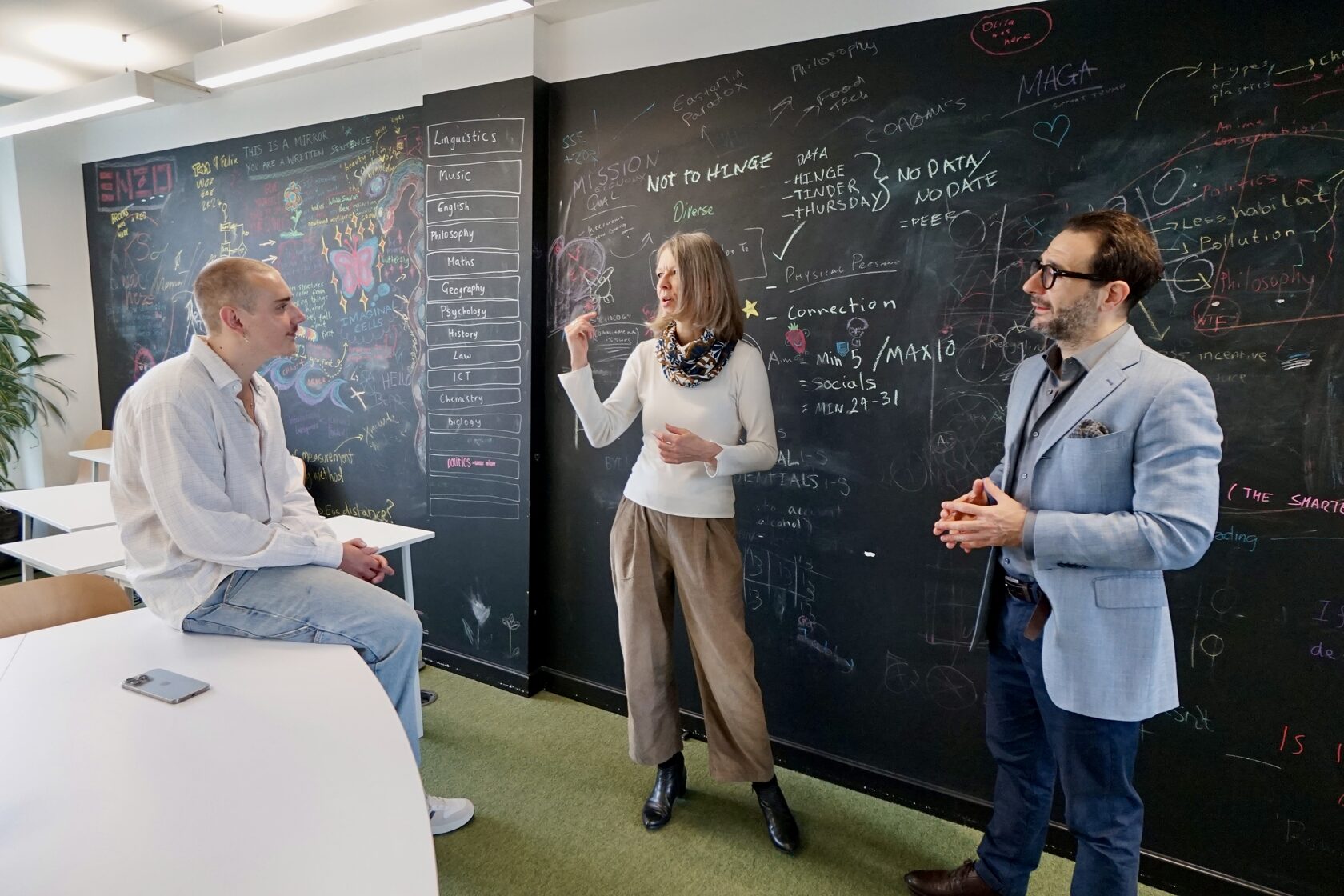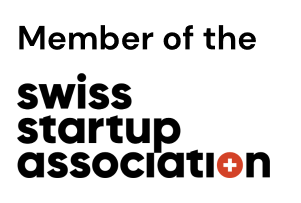What if the most urgent competence of the 21st century isn’t specialization — but integration? As global challenges grow more complex, a new kind of thinker emerges: part scientist, part philosopher, part systems builder. Integrators connect the dots to forge new ways of thinking.
Dr. Mattia Gallotti and Dr. Sabine Hoffmann are pioneers helping to shape what integration looks like in higher education today. One is a social philosopher teaching integration at the new London Interdisciplinary School (LIS) and the editor of a long-running cross-disciplinary journal. The other is a sustainability researcher at the Swiss Federal Institute of Aquatic Science and Technology (Eawag) and lecturer at the Swiss Federal Institute of Technology Zurich (ETH Zurich), transforming how scientists collaborate to address environmental and societal challenges. Their intellectual partnership, spanning teaching, research, and editorial leadership, is helping redefine what it means to educate for complexity.
This article brings together their stories into one: half is focused on Mattia Gallotti’s teaching and editorship in London, the other on Sabine Hoffmann’s research and teaching at Eawag and ETH in Zurich. Together, they offer a blueprint for how integration can be taught, practiced, and institutionalized.
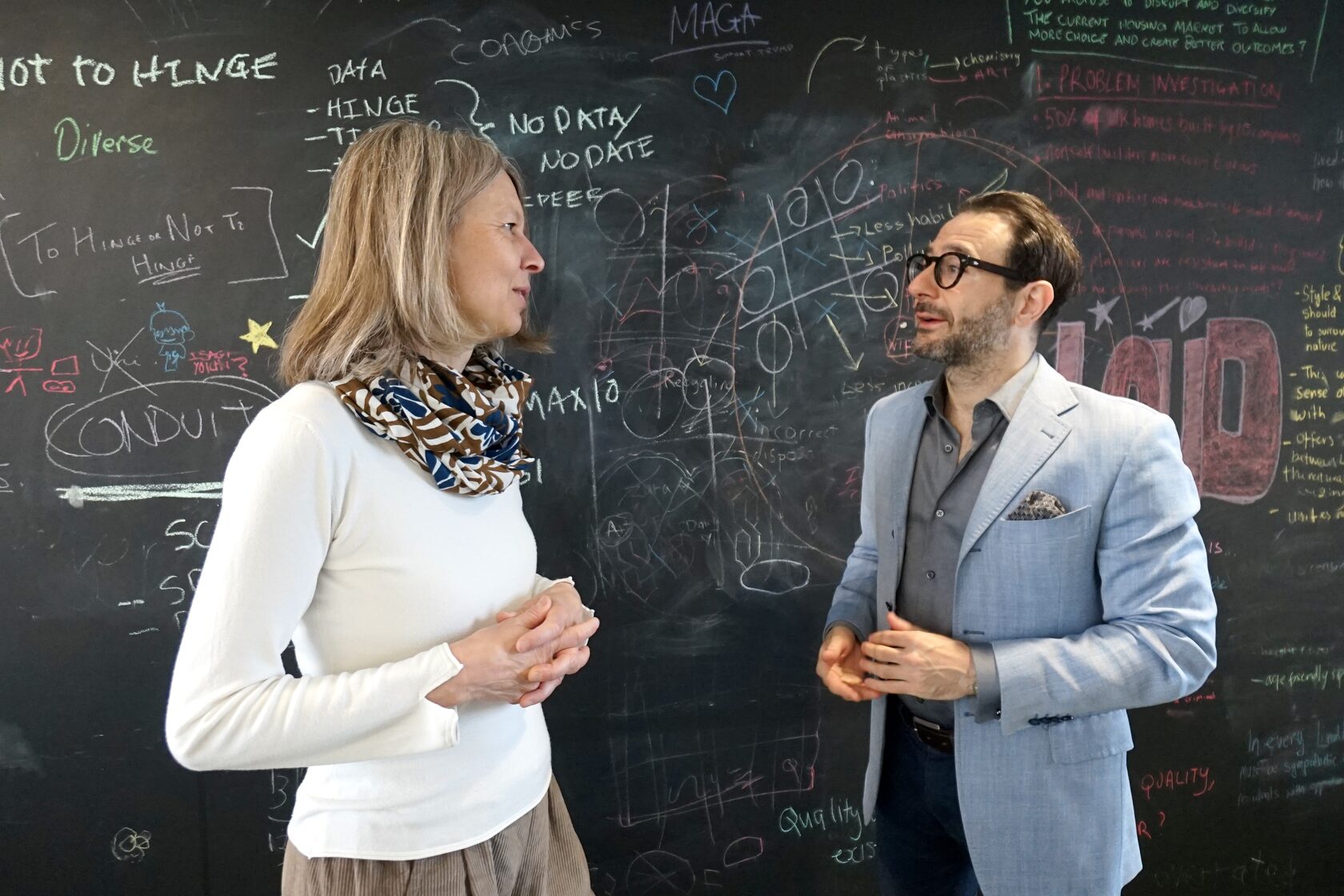
Before helping to develop LIS’s groundbreaking approach to education, Mattia’s own path had already crossed disciplines. He studied economics at Bocconi University, then shifted to philosophy at the London School of Economics, followed by a PhD in the philosophy of social science at Exeter and UC Berkeley. Over the years, he has moved swiftly between teaching and research, and academic management — from writing on social ontology to co-designing LIS’s BASc degree. Today, he leads the school’s flagship work on integration, helping students and professionals to learn not just concepts but the competencies for integrating in practice.
What stood out in our conversation is how naturally Mattia blends abstract thinking with institutional design. His own journey illustrates the very thing he teaches.
Sabine’s journey is equally interdisciplinary. When we met in Zurich, she had just returned from London, where she had been guest lecturing in Mattia’s course. But her engagement with integration began much earlier. Trained as a geoecologist, Sabine earned her PhD in development studies at the Geneva Graduate Institute and went on to build a career focused on inter- and transdisciplinary research. At Eawag, she works at the intersection of science and society — using systems thinking, science integration and stakeholder engagement to address complex environmental challenges.
She also teaches — together with her colleague Dr. Bianca Vienni-Baptista from the Transdisciplinarity Lab (TdLab) a pioneering course at ETH. The course equips environmental scientists with the competencies needed for collaborative and integrative, real-world problem solving.
Her collaboration with Mattia began over a year earlier, when they met at the UK Interdisciplinary Teaching and Learning Conference. What followed was a deep intellectual alliance: Mattia invited Sabine to join the new Board of Interdisciplinary Science Reviews, one of the longest-running interdisciplinary journals.
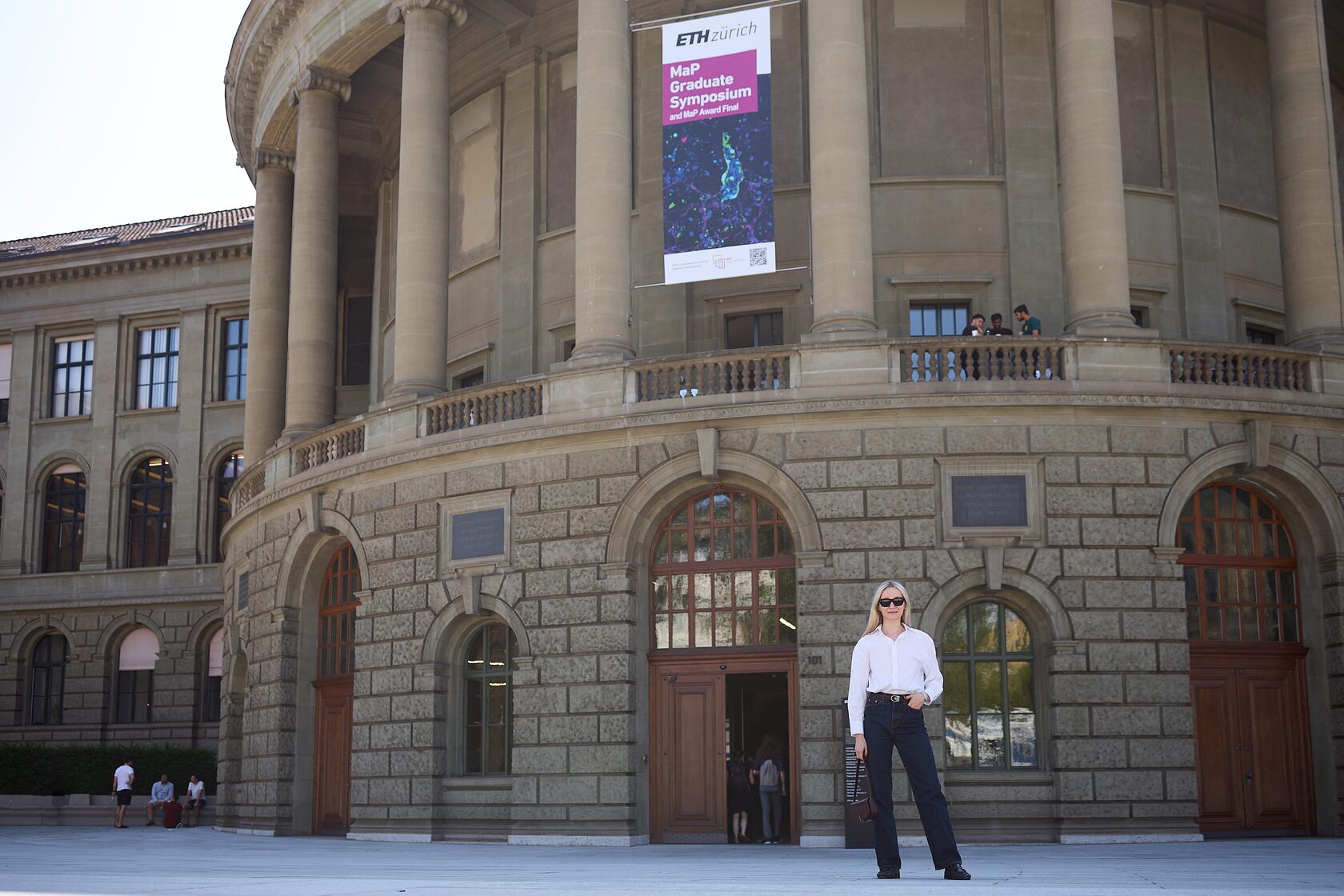
We spoke at ETH Zurich — an institution as prestigious as it is forward-looking. Ranked #7 globally in the QS World University Rankings 2026 and #1 worldwide in earth and marine sciences, geology, and geophysics, ETH is the top-ranked university in continental Europe. It was the ideal place to reflect on how higher education institutions must evolve to meet today’s complexity.
Our conversation unfolded in a setting that mirrored the very theme we explored: building bridges — not only between disciplines, but also between academic traditions and the urgent need for new ways of thinking. Integration is no longer an experimental approach. It is quickly becoming a core competence. And, it’s not just a method, but a mindset — and vital for leadership today. If universities hope to prepare students for the defining challenges of our time — from climate change and artificial intelligence to pandemics and inequality — then integration must become a central pillar of the curriculum.
At the same time, the London Interdisciplinary School — a bold, learning-first institution in the UK — continues to demonstrate what’s possible when interdisciplinarity is the design principle of education. From governance to curriculum, every layer at LIS is designed to support integrative, boundary-crossing thinking. Its model is already becoming a reference point for 21st-century education.
(To learn more, see In Conversation with the London Interdisciplinary School, which features insights from the Dean, Professor Carl Gombrich, and Ed Fidoe, Founder and CEO.)

Let’s begin with the first of these two stories: Mattia Gallotti and the making of integration at LIS.
Part I: Mattia Gallotti – Philosopher, Editor, Integrator
Let’s start with your background — your route from economics and philosophy to LIS.
"I studied economics at a time when there was no PPE programme offered in Italy (Politics, Philosophy and Economics). After graduating at masters’ level, I realized that I was more interested in the questions that economists asked than the methods they used. I applied to study philosophy and, after receiving a scholarship to study at the LSE, I completed a PhD in philosophy between Exeter and Berkeley.
As a postdoc I published academic articles out of my PhD dissertation until I got a job back in London to manage a research program. The program was described as interdisciplinary, in fact it was multidisciplinary — there was no integration. That’s when I started to enjoy being a research manager as much as I love doing active research. That side of me was new, academic leadership was something I found inspiring and natural."
How did you get involved with LIS and the integration course?
"I joined LIS as founding faculty at a time when there were no formal academic roles then. I was part of a group of people building a new kind of University. Later, I became Head of Research and Development, a role that was eventually retired when LIS’s focus on teaching and learning became paramount.
The integration course developed out of this journey. It’s the first of its kind: a full course dedicated to integration as a method, practice, and a unique form of expertise. What really excited me is that ‘s not just about teaching interdisciplinarity — integration is about doing it in practice."

What’s your take on the history of interdisciplinarity and how LIS fits in?
"It’s important to distinguish between the practice of interdisciplinarity and the concept. People have crossed disciplinary boundaries since human inquiry started in earnest — to solve problems, to invent, to understand the world. But the concept of interdisciplinarity only gained institutional recognition in the early '70s.
LIS is one of very few institutions built on interdisciplinarity since its inception. Both the concept and the practice lie at the core of everything we do: governance, pedagogy, culture. LIS as an academic institution shows what can be done when interdisciplinarity is there from the beginning. Of course, we’re not alone. Other institutions operate in the same space such as, for example, Utrecht University. which leads on interdisciplinary studies in the continent."
Do you think more established institutions can evolve to become interdisciplinary?
"That’s a difficult question. I don’t see the system as a whole changing. Many institutions are ‘too big to fail’ or even too big to change. They’ve been successful in a disciplinary paradigm, and they might decide to continue to lead in that way.
So, what do we do about it? We should learn to play with what we have. For example, the focus could be shifted from multidisciplinary work to proper interdisciplinarity. What big institutions seem to be doing — often in excellent ways! — is multidisciplinarity.
Multidisciplinarity is a necessary but not sufficient condition for interdisciplinarity. If there is a strong enough multidisciplinary basis to start with, what can be done next is to build an integrative structure on top of it, one that would enable teaching and research programs to become thoroughly interdisciplinary.
It’s a bit like trying to improve a car while you’re using it. The car is working and you can’t start from scratch. You can only work with what you’ve got, but you can still tweak things while the engine is on. That’s what this transformation looks like. Not easy, but not impossible either."
What is integration to you?
"Integration is the core — the brain — of interdisciplinarity. People have been doing it for centuries without calling it ‘integration’ - the act of synthesizing knowledge across boundaries. Without integration, you’re not really being interdisciplinary — just multidisciplinary.
Right now, we’re in the early stages of methodologizing integration. It’s still a black box in many ways. But that’s changing. And it’s exactly where the most exciting questions lie."

You’re now editor-in-chief of Interdisciplinary Science Reviews, one of the oldest journals in the field. Please could you share a little about its history, evolution, and your vision for it?
"Interdisciplinary Science Reviews – call it: ISR - was founded in London in 1976. It will turn 50 next year so we’re preparing a special anniversary issue which I’ve called Project 50. We’ll launch it in early 2026 and will probably throw a party, not just to mark the journal’s historical contribution, but to celebrate the new direction started earlier this year.
ISR has a fascinating intellectual history. The journal was conceived in the UK at a time when interdisciplinarity wasn’t yet mainstream in academe. The 1972 OECD report on interdisciplinarity, which helped to spark the movement, originated mainly from continental inputs. But ISR was a distinctly British initiative. From the start, the name reflected an ambition: that interdisciplinarity would one day become a science.
Has it become a true science (yet)? I don’t think so. Interdisciplinarity is something else — something less codified, both art and science, a set of soft skills, but also a reflective and metacognitive practice. The journal thrived through the 1980s and 90s, and what’s remarkable is that it only had five Editors-in-Chief in nearly fifty years. My predecessor was at the helm of the journal for sixteen years.
When Sage Publishing took over in 2024, an opportunity came up to rethink the direction and position of the journal in the field of interdisciplinary studies. I was interviewed for the role last October, then me and my team started in January.
What is the new direction then? We want ISR to become the flagship journal of interdisciplinarity. There is a demand in the field for a core journal where to publish cutting-edge, original, and critical work on interdisciplinarity. Interdisciplinarians often end up submitting work on, say, integration to disciplinary journals, which is ironic. The field needs a publishing home. I’m convinced that ISR can provide the forum for dialogue and growth that our community needs, individually and collectively.
That’s my vision. ISR will publish work on interdisciplinary teaching, research, and leadership — always with a critical lens. We won’t take the word ‘interdisciplinary’ for granted. Every author will need to explain what they mean by it, how they’re pursuing integration, and why it matters. In that sense, the journal isn’t just a publishing platform, what we’re trying to do is to consolidate the theoretical foundations of the field."
How did your collaboration with Sabine Hoffmann begin?
"I met Sabine last year at the UK Interdisciplinary Teaching and Learning Conference — the annual British, practice-oriented conference. I was already familiar with her work on integration, and when we finally connected in person, it was clear that we spoke the same language. She is one of the few people who don’t just talk about interdisciplinarity in abstract, but she and her group and collaborators have opened new ways of thinking about integration as a form of expertise.
We started talking, and the talking naturally led to more collaboration. I then asked her to join Interdisciplinary Science Reviews as a Board member, which she did a few months ago before flying to London in May to guest lecture in my integration course at LIS. Sabine is now an intellectual ‘partner in crime’, someone I would hope to continue to work with as we champion integration at all levels of academic activity, and beyond."

You and Sabine are now advocating for the role of the integrator. Who is an integrator?
"Integration should be recognized as a form of expertise in its own right. That means having dedicated people — integrators — whose role is to facilitate connection-making and synthesising across disciplines. They should be trained, supported, and funded, just like any other expert. This is how we start transforming both academia and leadership in practice."
How does this mission shape your current research?
"I’d like to write more foundational and systematic work — accessible yet rigorous. The literature is rich but fragmented. There aren’t many entry points for teaching purposes or for disciplinary academics. I also think that we need better interdisciplinary writing — a style that reflects its inherent complexity but remains readable and engaging. There’s room for a new kind of scholarly expression, one that is rich enough to mirror the diversity of thought styles and avoids the pitfalls of dry academic prose. I’d love to help shaping that style."
What would you say to someone who hears ‘interdisciplinarity’ and thinks it’s just a buzzword?
"There’s a real shift happening these days. Interdisciplinarity isn’t a trend anymore, it’s a new way of thinking and learning. The problems we face naturally transcend disciplinary boundaries. So we need approaches — and people — that can transcend them.
That’s where integration comes in. And that’s why we need skilled integrators."
Part II: Sabine Hoffmann – Researcher, Educator, Integrator
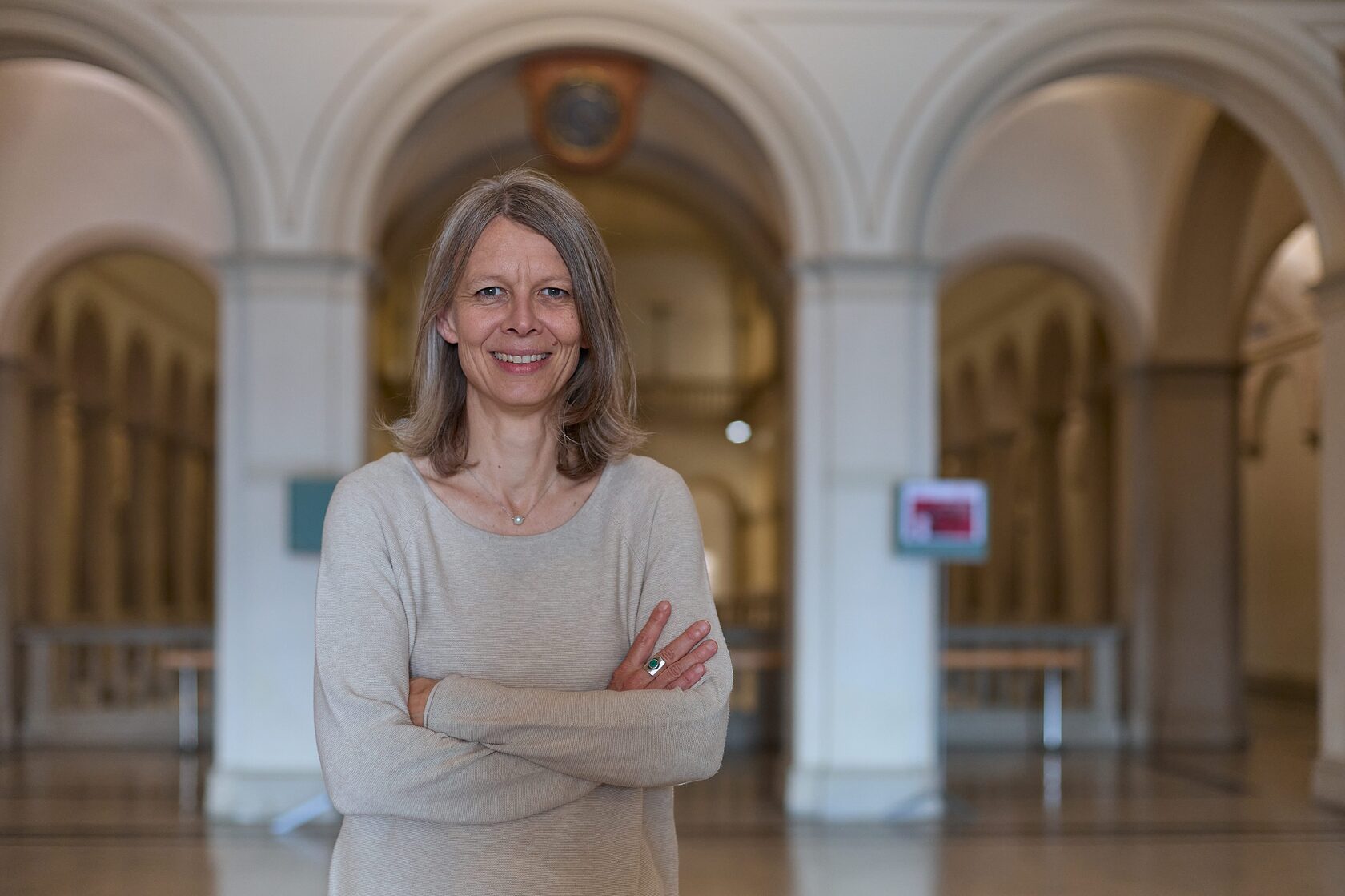
You have just returned from teaching in Mattia’s course at LIS. But your work in integration spans far beyond that. Can you walk us through your background and how integration became central to your work?
"I’m trained as a geoecologist and earned my PhD in development studies at the Geneva Graduate Institute. Early in my research, I became fascinated by how we deal with complexity in sustainability contexts — particularly in water management.
That led me to work at Eawag, the Swiss Federal Institute of Aquatic Science and Technology, where we combine systems thinking, stakeholder engagement, and science integration to tackle real-world environmental problems. Over time, I realized that while disciplinary expertise is essential, it’s not enough. We can be brilliant in silos, but the problems don’t show up that way. We need ways to work across boundaries — and integration became the key concept I started to focus on."
How do you see the history of integration, as both practice and concept?
"Integration has been practiced for millennia — people have always crossed boundaries. But the concept of integration is young, and only now are we learning to bridge between the theory and practice of integration. That’s the exciting part.
We’re at the beginning of treating integration as a field — with frameworks, concepts, methods and tools. In a way, we’re formalizing something humans have always done intuitively. The practice is ancient. The concepts, methods and tools are emerging."
You’ve called integration a form of expertise. Can you explain what that means?
"Absolutely. People still treat integration as something that automatically happens — when working in an interdisciplinary team. But it’s not. Integration needs to be proactively led. It’s about linking, blending, and synthesizing insights from multiple disciplines, but also from policy and practice to generate a new, shared understanding.
It’s a collaborative effort, which needs structures and routines. For me, integration is the process of establishing critical connections between these insights to address complex problems and generate promising solutions. And designing and sustaining that process — a process of creating something new that didn’t exist before — is where the expertise lies."
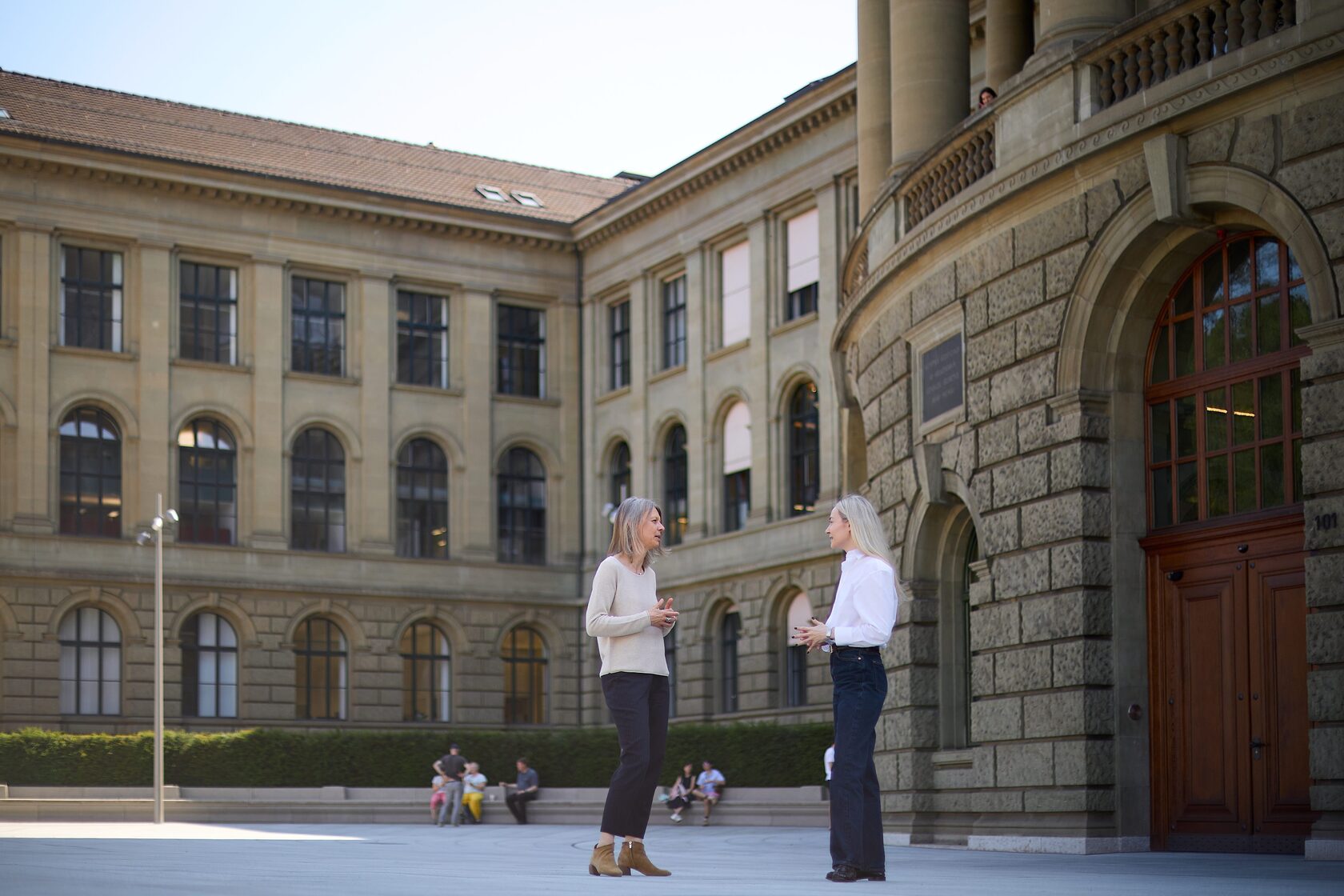
What’s the difference between multidisciplinarity and interdisciplinarity?
"It’s a crucial distinction. Multidisciplinarity is when people from different disciplines work side by side, but each stays in their own lane.
Interdisciplinarity is when you actually integrate — when you combine insights, reframe problems, and build shared understanding.
The first is a prerequisite. The second is the goal."
Is that where the idea of the “integrator” comes in?
"Exactly. Mattia and I both felt strongly that this work deserves recognition. The role of the integrator should be formalized — in academia and beyond.
We imagine someone trained in integration, whose job is to lead and facilitate integration across boundaries. Not as an add-on, but as a core role. Integrators are not the ones who join the dots after the fact — they shape the process from the start. We want to push for that — for integrators to be hired, funded, trained."
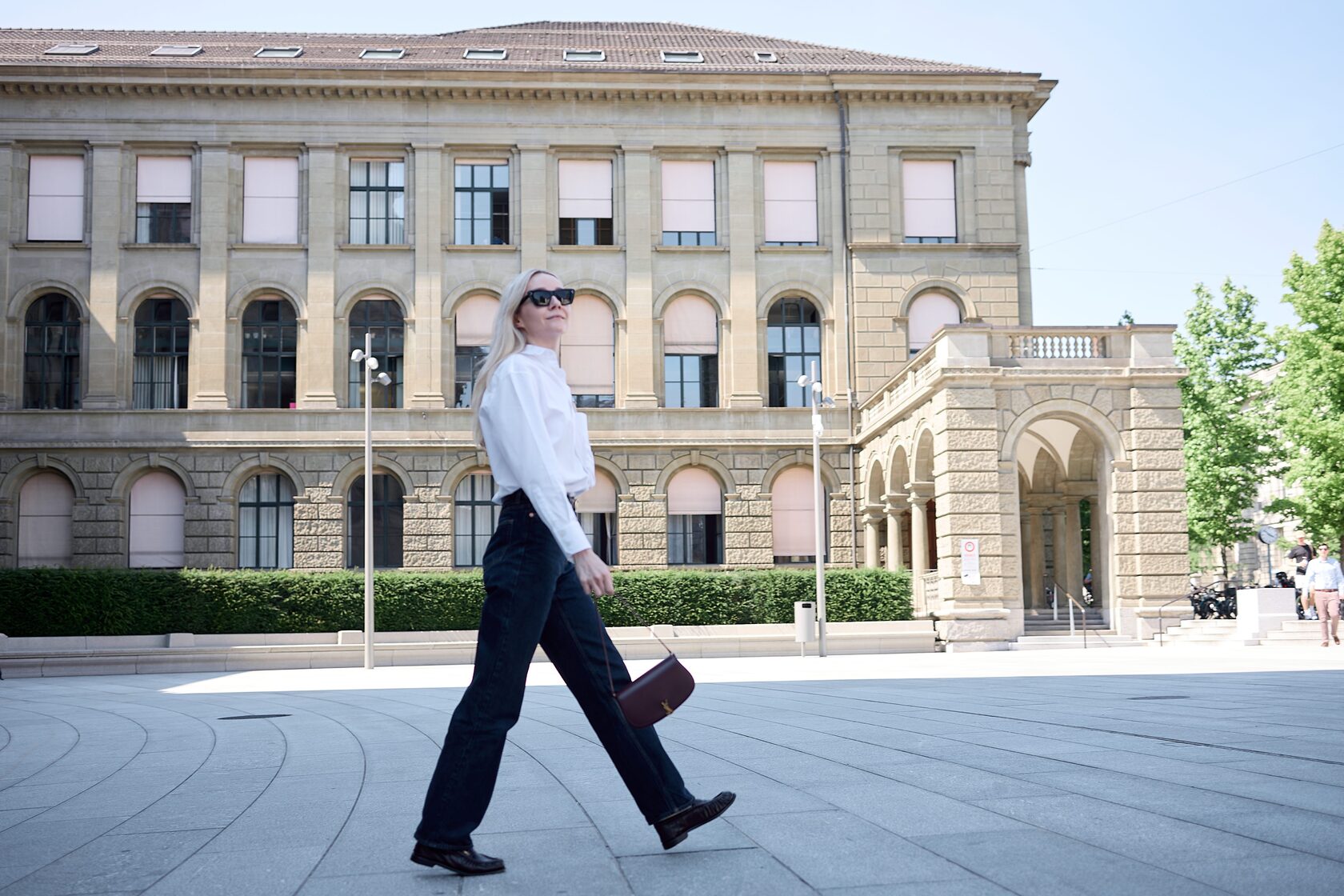
How did your collaboration with Mattia Gallotti and LIS come about?
"Mattia and I met in person at the UK Interdisciplinary Teaching and Learning Conference, which is very practice- and teaching-oriented. We immediately connected over our shared interest in integration — not just as a concept, but as a practice and a form of expertise. It quickly became clear that we spoke the same language and shared a common goal.
That led to an invitation to guest-teach at LIS, where Mattia had designed the first dedicated university course on integration in the UK. Teaching there was a great experience — the students are extremely creative and open to critical thinking. And the institutional setting at LIS supports that. It’s interdisciplinary by design, not by exception."
What role do you now play at Interdisciplinary Science Reviews?
"When Mattia became editor-in-chief of Interdisciplinary Science Reviews, he invited me to join the new editorial board. That, too, felt like a natural extension of our collaboration — not just an editorial job, but an intellectual project. We want to build a field, define its boundaries, and champion the role of the ‘integrator’ as a formal figure in research, teaching, and leadership.”
We want the journal to become the home for serious work on integration — both in theory and practice. We’re asking authors to define what they mean by interdisciplinarity and to engage with integration critically.
Our aim is to build that field — to give it structure, legitimacy, and visibility. It’s about creating the conceptual and methodological foundation we still lack."

Is this mission something that is driving or contributing to your current research?
“Yes, absolutely. One of the things I’d like to do is produce more foundational work on integration and integrative leadership. There is very good literature out there — but it's often fragmented, and not always accessible.
What we lack are clear entry points that can be used both in leading and facilitating integration, but also in teaching and learning in higher education."
You teach a course at ETH Zurich designed to cultivate those collaborative and integrative skills. What does that look like in practice?
"The course is called Integration in Science, Policy and Practice: Inter- and Transdisciplinary Concepts, Methods, Tools. It’s a Master's-level course within the study program ‘Environmental Sciences’. Together with my colleague Dr. Bianca Vienni Baptista from the Transdisciplinarity Lab (TdLab) at ETH Zurich we launched the course three years ago — Bianca brings deep expertise in transdisciplinary research and cultural studies. The course runs in the spring semester, with a cap of 20 students to allow deep interaction.
Our integrative teaching and learning is structured in three parts: first, we introduce the core elements of integration — for example different dimensions, principles and conditions. Then we work on real-world cases. We bring in actual inter- and transdisciplinary projects. Experts involved as integrators present the environmental challenge the project addresses, explain the integration process and introduce one specific integration method. Students use the core elements to analyse and cross-compare these cases. Finally, they apply the integration method in class, and then reflect on the potentials and limitations of it.
The most exciting part is the creative element. For example, for the final presentation — the cross-comparison of cases — students reflect on their learning journey and present their insights in experimental formats — some create short films, others organize interactive panel discussions or even perform role plays. It brings out the emotional and social dimension of integration — the discomfort, the empathy, the reflexivity. It’s where the theory becomes lived experience."
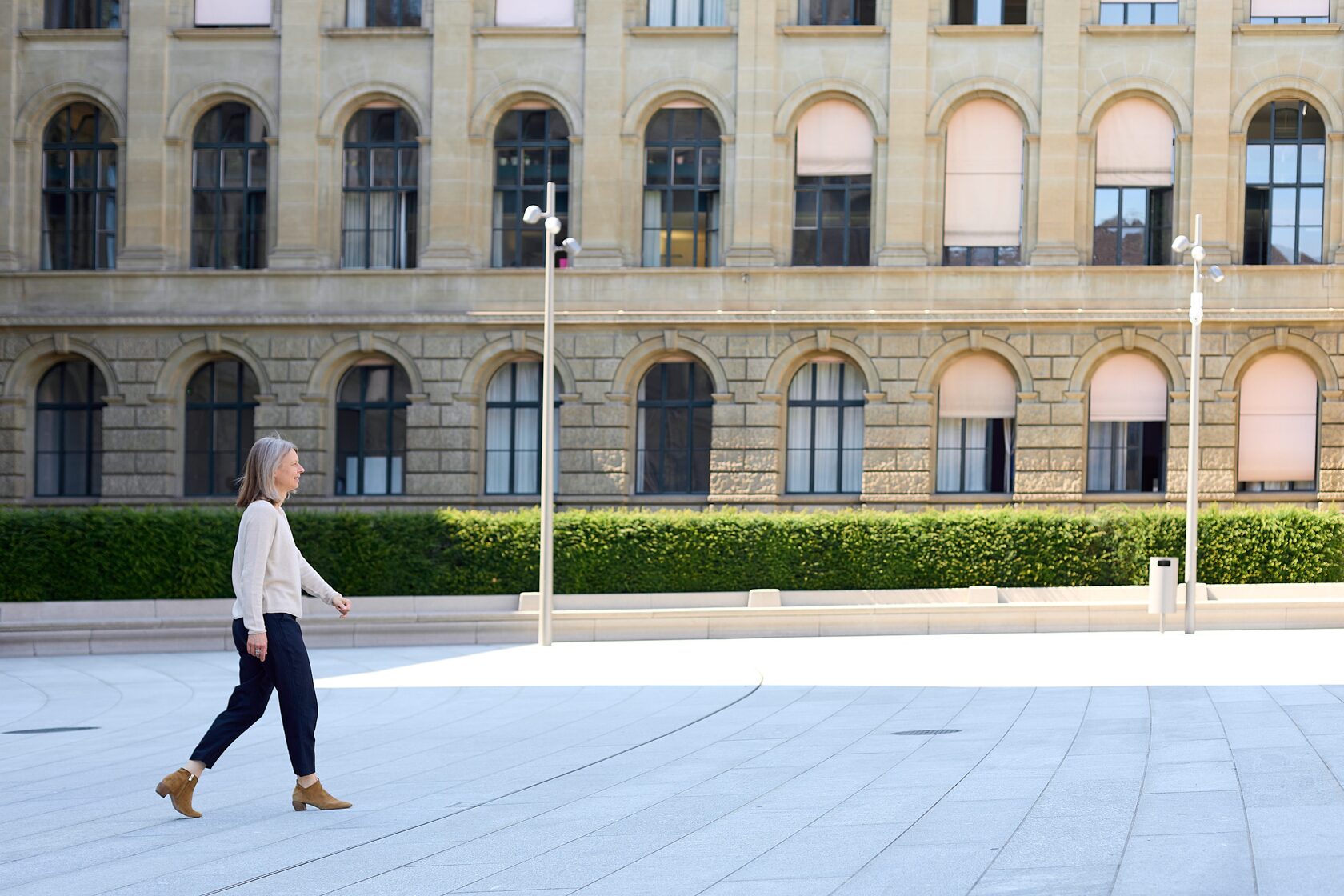
What’s the most difficult part of teaching integration?
"Helping students unlearn the idea that there is a predefined recipe. Integration often means embracing complexity and ambiguity, and leading without certainty.
It’s a different kind of rigor. Not less — but different. And that takes emotional resilience, not just cognitive strength."
ETH is one of the most prestigious science institutions in the world. Is it difficult to advance integration in a place built on disciplinary strength?
“It’s a challenge, yes. But it’s also an opportunity. ETH has a very strong foundation across disciplines — that’s fantastic.
The key is to help people see integration not as a threat, but as an amplifier. It builds on that disciplinary foundation. It doesn’t replace it.
And I think people are starting to see the added value of crossing boundaries to address real-world problems.”
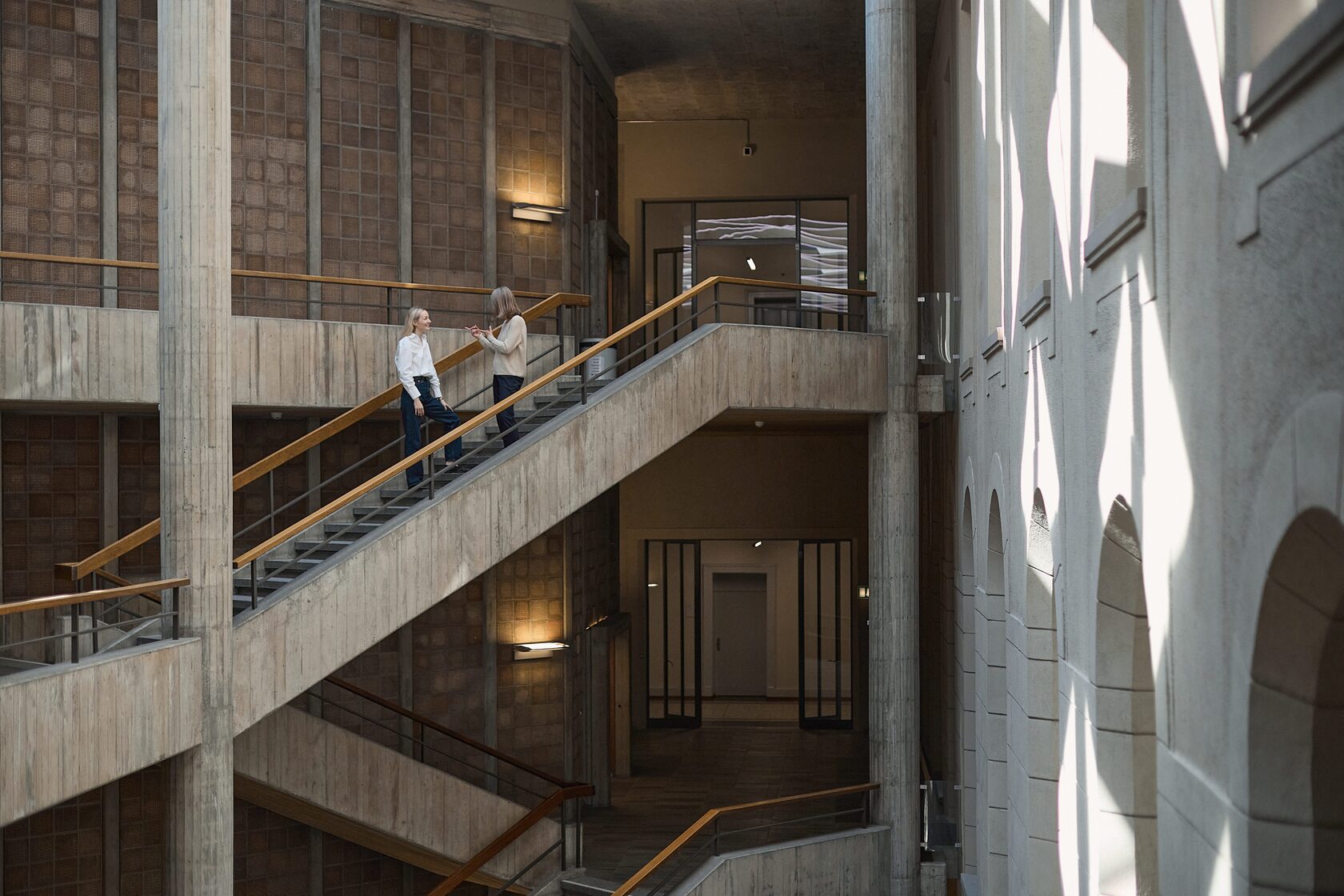
How does teaching intersect with your research at Eawag?
"Very directly. At Eawag, I lead a research group that studies integration in inter- and transdisciplinary projects. But we also lead integration in such projects.
For example, we are part of a research project called TRAPEGO that explores sustainability transformations of pesticide policy and practice in Switzerland. It brings together environmental scientists, political scientists, agricultural economists, and others. Together with Dr. Benjamin Hofmann, we lead integration across different disciplines. We ensure that we build something new together rather than just working on our disciplinary parts.
We also study the integration process itself — how it happens, where it works and where not, and what supports or hinders it. So, there is a tight feedback loop between leading, studying and reflecting on integration."
You’ve also co-created some powerful communication tools — like an animated video on sustainable sanitation systems. What was the goal of that?
"We developed that video as a way to synthesize complex research from across disciplines and make it accessible beyond academia — especially for stakeholders and practitioners.
It was created with a group of early-career researchers and became a learning process in itself. We wanted to show that interdisciplinary integration can also produce outputs that are engaging and usable across audiences. And fun — which we don’t emphasize enough in academia."
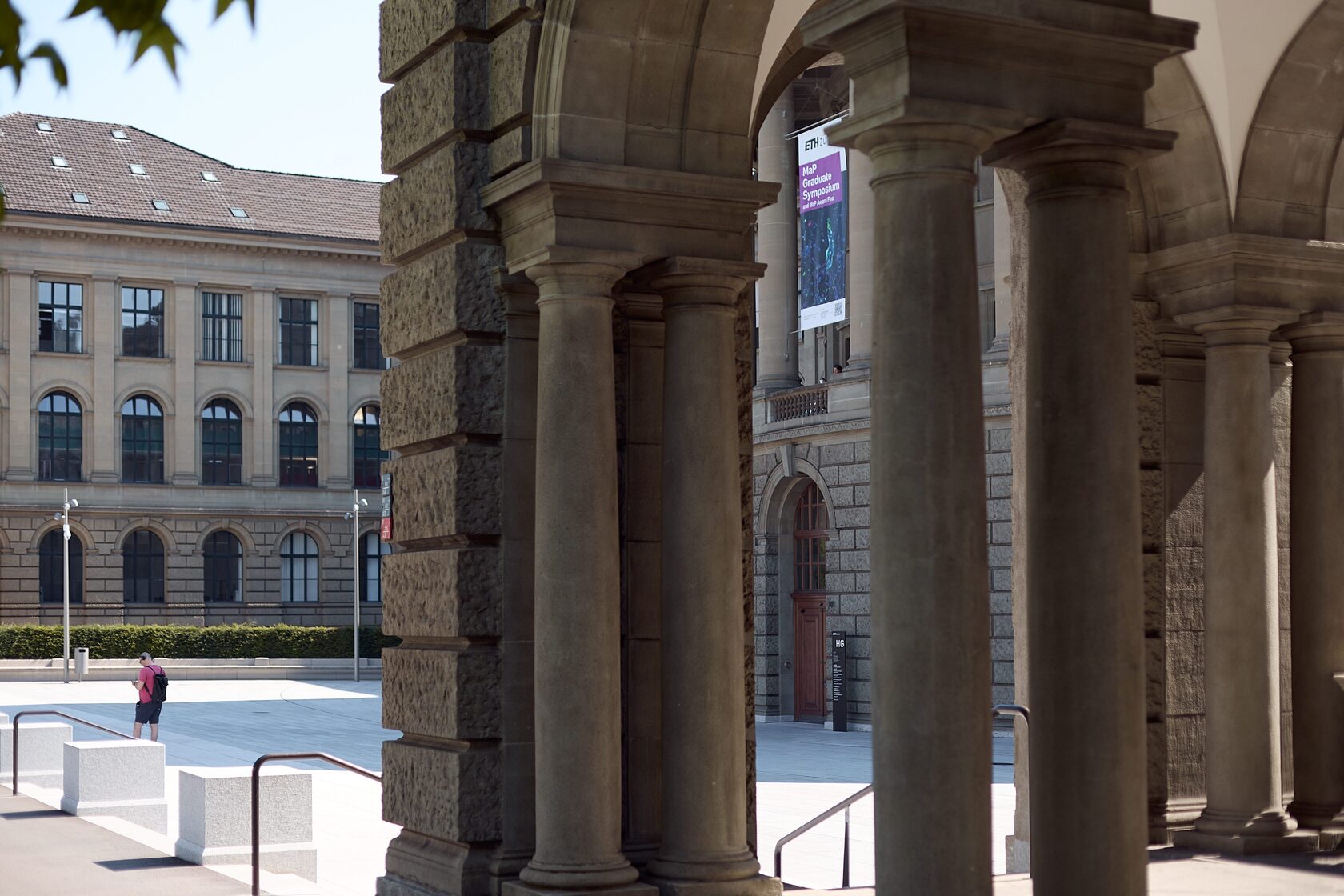
You’ve even used humor — like the cartoon series — to point out common pitfalls in interdisciplinary projects. What inspired that approach?
"Yes, together with Dr. Lisa Deutsch, we created a series of cartoons titled ‘How to Make Sure that Integration Fails’ — it’s based on real patterns we observed in practice.
Humor can be an invitation to reflect, to disarm people - it’s the best medicine for processing challenging experiences. It’s a playful yet critical way of surfacing the issues that often sabotage integration."
For those trying to bring more integration into their institutions, your ITD Action Guide seems like a valuable resource. What was your intention behind it?
"It was really about providing entry points of actions for leaders of research organisations to strengthen inter- and transdisciplinarity in their organizations. Because inter- and transdisciplinarity can only thrive when there is institutional support.
It helps start the internal conversations that are necessary for lasting change."

What does future success look like — for you, and for the field of integration?
"Success would be the normalization of integration as a formal, supported, and respected expertise. That means funded positions, training pathways, proper recognition.
It also means building an intellectual tradition: scientific journals, teaching materials, shared conceptual and methodological foundations.
For me personally, success is seeing the next generation shape integration not only in projects, but also in the institutions they are involved in. I want students to leave my course not with a recipe, but with the ability to lead and engage in integration— in academia, in policy, in society.
The world’s problems don’t fit into disciplines. And so, our ways of teaching, learning, studying and leading must transcend those boundaries.
Integration is the practice that makes this possible. And those who can do it well — the integrators — are going to be the ones shaping the future."
To explore Dr. Sabine Hoffmann’s teaching, research, and current projects visit her official Eawag profile and the page of her Inter- and Transdisciplinary Research Group.
You can also learn about the ENHANCE Alliance Summer School, a program Sabine and Bianca co-lead at ETH Zurich, designed to cultivate interdisciplinary integration and innovation among students from across Europe, and the ITD Alliance Working Group on Integration Experts and Expertise led by Sabine.
For more information about Dr. Mattia Gallotti and his work at the London Interdisciplinary School, visit his official LIS faculty page.
You can also learn about the ENHANCE Alliance Summer School, a program Sabine and Bianca co-lead at ETH Zurich, designed to cultivate interdisciplinary integration and innovation among students from across Europe, and the ITD Alliance Working Group on Integration Experts and Expertise led by Sabine.
For more information about Dr. Mattia Gallotti and his work at the London Interdisciplinary School, visit his official LIS faculty page.
Special thanks to Kirill Delikatnyi, Clever Magazine contributor and LIS Master’s student, who conducted the interview with Mattia Gallotti and helped shape this dialogue. Kirill’s own academic journey at LIS is profiled in A Life of Boundless Curiosity.
Photos: Anastasiia Kruhol



